What I learned from walking Britain's entire coast
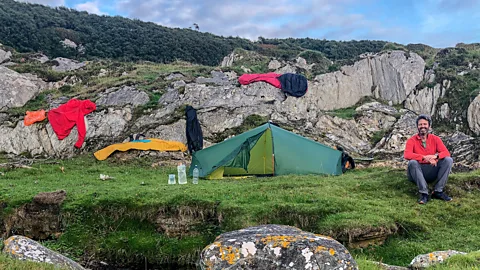 Quintin Lake
Quintin LakePhotographer Quintin Lake spent five years walking the coast of mainland Britain. He explains why the coast tells Britain's story better than anywhere else.
Camping out on the wild cliffs in Caithness in north-west Scotland, British photographer Quintin Lake wasn't short on company. This remote, blustery corner of the UK is home to thousands of nesting puffins, and Lake spent a "magical" evening and morning with the colourful creatures as they waddled, paraded, fed and groomed before leaving for the winter. This was just one of many memorable moments on his five-year solo mission to walk the entire coastline of the British mainland. He had to take precautions though: "I camped a little distance away from the puffins on a very steep cliff," Lake says. "I tied the tent closed with my shoelaces in case I decided to sleepwalk for the first time that night."
Setting off from the steps of St Paul's Cathedral in London in April 2015, Lake travelled clockwise around the island, breaking the epic journey up into legs ranging from two days to two months. In total, he walked for 454 days, covering more than 6,835 miles, camping along the way.
Having spent much of his career as a photographer in far-flung locations, his British coastal expedition was a deliberate decision to seek out artistic inspiration closer to home. By the time he'd completed the journey, closing the loop in September 2020, he not only had thousands of photographs and a remarkable visual archive, but a deeper understanding of the island's history, geography, industry, architecture, nature and identity. As he shares in his new book, The Perimeter, the experience reshaped how he sees Britain – and also led to revelations about himself.
Here, Lake speaks to the BBC about the wildest and most beautiful places he experienced, the emotional discoveries he made along the way, and why the coast tells Britain's story better than anywhere else.
 Quintin Lake
Quintin LakeWhy did you want to walk the entire British coastline?
To get under the skin of our island and to understand this place that I call "home". I'd previously walked the River Severn from the source to the sea and I found it the most interesting thing I'd ever photographed – I wanted more of that.
How physically challenging was the journey?
Scotland was very physically challenging. I got a torn tendon and I had shin splints, and I was managing being cold and wet in the winter. There were many days where I just had to keep walking – that was the only way to keep my body temperature up. I walked in snowstorms and woke up many times with the tent covered in ice, whereas on the south coast of England, I'd be looking on Tripadvisor and deciding where to get the best ice cream. That said, the light was sometimes the most spectacular in winter in Scotland, so, photographically, I got the most rewards there.
Set Out
Set Out is a BBC Travel series that celebrates slow, self-propelled travel and invites readers to get outside and reconnect with the world in a safe and sustainable way.
What was the most difficult section of the coast?
The Knoydart Peninsula on Scotland's west coast. The region around Knoydart's called the Rough Bounds. It's mountainous, with no paths; a lot of broken ground and cliffs all over the place. It's very tough to walk.
Did the solitude and isolation ever get to you?
Because I found every day so inspiring and I was looking for images, I didn't feel that lonely. But practical things could be very difficult, like sourcing food, sourcing water and keeping warm.
Was the solitude important to your experience and to your photography?
Picasso said that, "Without great solitude, no serious work is possible". I love walking with friends and family, but if I'm by myself, I'm looking and observing all the time. The slowness and rhythm allow you to absorb the landscape more profoundly.
What did you learn about Britain's geography from the adventure?
I didn't realise how wild Britain was, especially in Scotland. I didn't realise Scotland is pretty much half of the entire coastline. I didn't realise the most dramatic parts of north-west Scotland would feel like the Norwegian fjords. People say Britain's an overpopulated island, but when you get away from the towns and cities on the coast, you don't need to walk far to feel space and isolation. You get that easily in Dorset, Essex, Cornwall.
I think Britain is the most geographically diverse place in the world. If you look at a geological map of Britain, it's like a big piece of different coloured Play-Doh that got squished apart. The geology affects the landscape, and the landscape affects the nature of the people. That makes it a very interesting place to walk through.
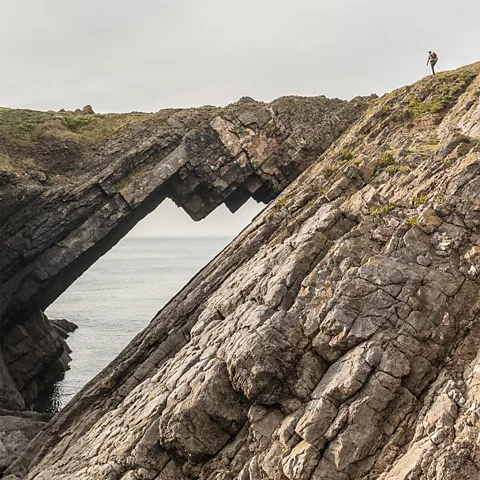 Quintin Lake
Quintin LakeWhat impression did you get of modern Britain's identity?
How proud and distinctive every region is. My feeling of Britain is a patchwork of "clans". I was moved by how much people I met would talk with love and fondness for their region, with different accents and different words for, say, a bread roll: bun, bap, barm, roll…
Did you get a strong sense of British history, too?
Walking the south coast of England is like a mini history lesson. You walk past the first Roman landing sites in Kent, then past the Norman Dover Castle. You see Napoleonic-era Martello towers and the places where the Vikings first attacked on English soil at Portland in 787. You go to Portsmouth and see HMS Victory, where Nelson died in the Battle of Trafalgar and the Tudor Mary Rose. You can't help but feel the depth of history of our island.
The remains of thousands of tank traps and defences of World War Two also encircle the island. For thousands of years, the coast has been about how we try to defend this island. There are the remnants of those defences and fears of invasion all around.
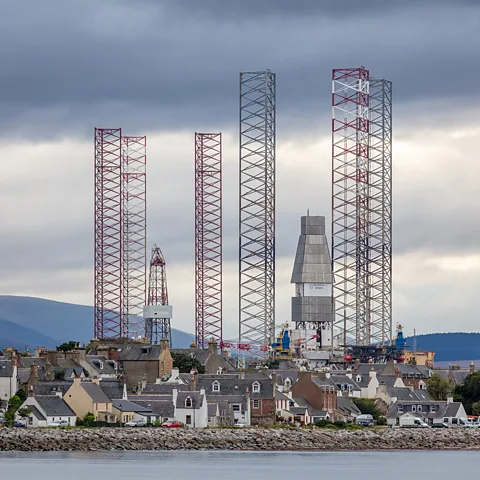 Quintin Lake
Quintin LakeWhat were the most beautiful places you experienced?
Knoydart and the Rough Bounds because it's so isolated and dramatic. People there were amazing, and there was a great sense of adventure. The other big discovery for me was Northumberland. I found that whole area really beautiful: Bamburgh Castle, Holy Island (Lindisfarne), the long beaches and amazing light.
I'd also say the Gower Peninsula in Wales. The cliffs at Three Cliffs Bay are quite high and when you arrive via the coast you have a panoramic view. It gives you a sense of freedom.
Were there any locations that surprised you visually or emotionally?
The Redcar steelworks in Teeside, because it's the end of an era. I didn't meet anyone in that area who hadn't had a family member working in the steel industry there.
At Cromarty in Scotland, it was dramatic to see the jack-up oil rigs towering hundreds of metres above the village. That's a moment in our time: the end of the carbon era. I'm sure in 50 years they won't be there.
Where was your favourite wild camping spot?
On the cliffs in Caithness, up in north-west Scotland. I camped a little distance away from the puffins on a very steep cliff. I photographed puffins in the evening and the following morning, which was a magical experience.
Which coastal city impressed you most?
I like a city to feel alive and vibrant, not just a historical remnant, so my favourite cities on the coast would be Glasgow and Liverpool. Both had layers of history but they're really energising and felt new and of the "now".
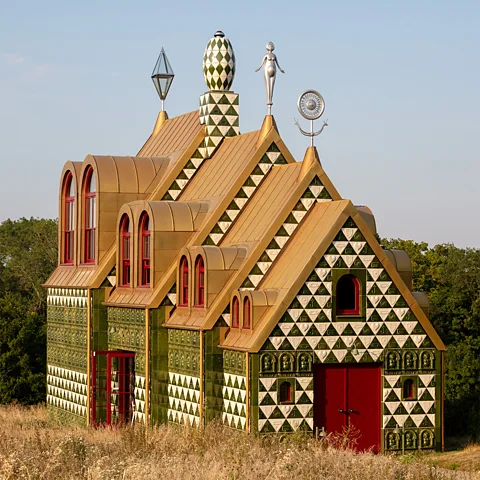 Quintin Lake
Quintin LakeWhat was the greatest architectural wonder you came across?
My favourite architectural structures in Britain are the bridges. I think the Forth Bridge, just above Edinburgh, and Kylesku Bridge, right in the Scottish Highlands, a modern bridge surrounded by lochs and mountains, are the most beautiful.
In terms of buildings, my favourite is the transport museum in Glasgow by the architect Zaha Hadid, and A House For Essex by Grayson Perry, a really exuberant building on the border of Essex.
More like this:
• An epic 38-mile hike to England's northernmost point
• The Scottish isle you can only visit on a day trip
• The Ridgeway: Hike the 5,000-year-old pathway that's Britain's oldest road
Are there any easy-going stretches that you'd recommend to people who aren't big hikers?
The Norfolk Coast is very well-marked, very beautiful and very flat. You get amazing skies, beautiful flint churches with round towers and long beaches, like Holkham. It's very charming and there's a lot of history.
Perhaps my top day walk in Britain is the Seven Sisters from Seaford to Eastbourne, or as a shorter loop from Eastbourne, with the iconic white cliffs. It's not necessarily easy – it's rolling but fairly flat and well-marked. You can do that as a day trip from London.
Where would you recommend overseas visitors go to see a new or surprising aspect of Britain?
The Aberdeenshire coast up in north-east Scotland, places like Crovie and Gardenstown, where you have former fishing houses tucked in below the cliffs and hidden by the landscape. That would surprise people. It's an area, at Pennan specifically, that was featured in the film Local Hero. I'd also suggest the peninsulas, like the Llŷn Peninsula in Wales for its isolation, history, Castle Cricieth and the Whistling Sands beach.
A lot of visitors might go to London or Brighton. But these other places give a sense of romance, isolation, stillness and history. If you go to a hotspot, you don't get that, but that's what makes this island unique.
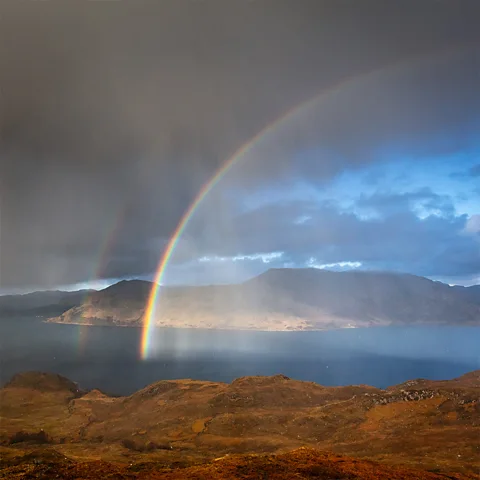 Quintin Lake
Quintin LakeWhat did you learn about yourself from walking the coast?
I've got a still calmness from the journey that's stayed with me. It makes me feel very content thinking about my times on the trail, and I now know that walking and being in nature has to be part of my life on a regular basis. I need that in order to be content. I also know that simply by walking and carrying a camera there is inspiration to be had. That makes me feel very positive about life.
The Perimeter by Quintin Lake is published by Hutchinson Heinemann in hardback and eBook, with more of his photos of the British coast on his blog.
--
If you liked this story, sign up for The Essential List newsletter – a handpicked selection of features, videos and can't-miss news, delivered to your inbox twice a week.
